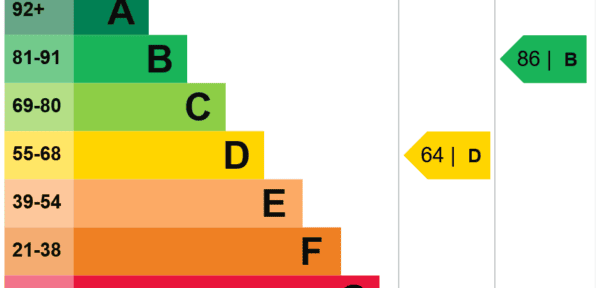RdSAP – A Potted History (1).

SAP was introduced for the first time in 1995, as the basis of a new approach to Building Regulations for new homes. It was subsequently updated in 1998, 2001, 2005, 2009 and 2012 for each successive update to the Building Regulations. Each revision of SAP re-evaluates the carbon emissions factors and new technologies that have been introduced and need to be included in the methodology.
RdSAP, based on SAP 2005, was created for the introduction of EPCs for existing dwellings in August 2007 (RdSAP 9.80). Since then there have been 7 updates to RdSAP to add additional data items, to support the introduction of RdSAP Conventions and to align with new versions of SAP; these were RdSAP 9.82, 9.83, 9.90, 9.91, 9.92, 9.93 and 9.94.
RdSAP 9.90 was introduced in April 2011, based on SAP 2009. The change to SAP 2009 meant more data collection for DEAs including the ability to specify two main heating systems to better reflect what the DEAs were finding during their surveys.
In April 2012, RdSAP 9.91 was introduced still using SAP 2009 but now including the ability to specify renewable systems and specific insulation products using the new ‘overwriting U-value’ functionality. This update was focused on getting RdSAP ready for Green Deal which was introduced in January 2013.
RdSAP 9.92 was introduced in December 2014, based on SAP 2012. This update included party walls and additional heating control options.
RdSAP 9.93, was based on SAP 2012 and included a new party wall recommendation as well as revisions to the underlying default U-values for walls. There was no change to the data entry requirements for RdSAP 9.93 compared to RdSAP 9.92.
The latest version, RdSAP 9.94, was introduced on 22nd September and enables RdSAP to use Appendix Q savings in the calculation.
The table below summarises the history of RdSAP and lists some of the key features of each update.
| RdSAP version | SAP version | Date | Key Features |
| 9.80 | 2005 | Aug 2007 | First incarnation of RdSAP used for EPCs for existing dwellings |
| 9.82 | 2005 | Sept 2008 | RdSAP includes floors, cob walls and thatched roofs |
| 9.83 | 2005 | Oct 2009 | Introduction of RdSAP conventions, related parties disclosure and Addendum |
| 9.90 | 2009 | April 2011 | Four extensions, two main heating systems and enter the kWp of PV systems |
| 9.91 | 2009 | April 2012 (E&W,NI) Oct 2012 (SC) | Wall thickness, entered U-values, extended roof room data |
| 9.92 | 2012 | Dec 2014 | Party walls, postcode specific EPC costs, park homes |
| 9.93 | 2012 | Nov 2017 | Party wall recommendation, revision to U-values for pre-1975 walls |
| 9.94 | 2012 | Sept 2019 | Appendix Q savings in the calculation |
What difference does a SAP update make to the ratings? When a new SAP revision is introduced, BRE try to ‘normalise’ any ratings changes to mains gas heated dwellings. So generally a mains gas heated dwelling would not see a huge jump in the SAP rating. The SAP rating is a cost based rating and therefore if the cost of heating fuel relative to mains gas changes with a SAP revision, you will see a change in the rating from one methodology to the next.
For a mains gas heated dwelling with a SAP in 2001 of 50, this would also be 50 in SAP 2005, in SAP 2009 there would be a small drop to 48 and in SAP 2012 that rating would stay at 48.
You can see the relationship between the different SAP ratings from the change methodology in SAP Table 15.
Future Changes
RdSAP 9.94 will be the version of RdSAP used for producing Energy Performance Certificates for existing dwellings from 22nd September 2019.
The update from 9.93 includes:
- Additional questions to be answered when creating a new EPC – The DEA should check the EPC register to see if an EPC exists for that property. If there is a already a valid EPC on the register, the DEA must then select an option to explain why another EPC is being produced.
- The ability to use Appendix Q savings in the calculation – Appendix Q is part of SAP that is used when a technology is not yet in the Product database, for example; flue gas heat recovery and heat pumps used to use Appendix Q before they were included in the Product Database. Basically, BRE produce a spreadsheet that enables the user to calculate the fuel or CO₂ savings from a new technology such as solar assisted heat pumps or dynamic insulation. The DEA can then include this saving in the data entry. As part of this addition there will be a new Addendum for the EPC to explain to the recipient that the savings from a new Technology have been included in the calculation.